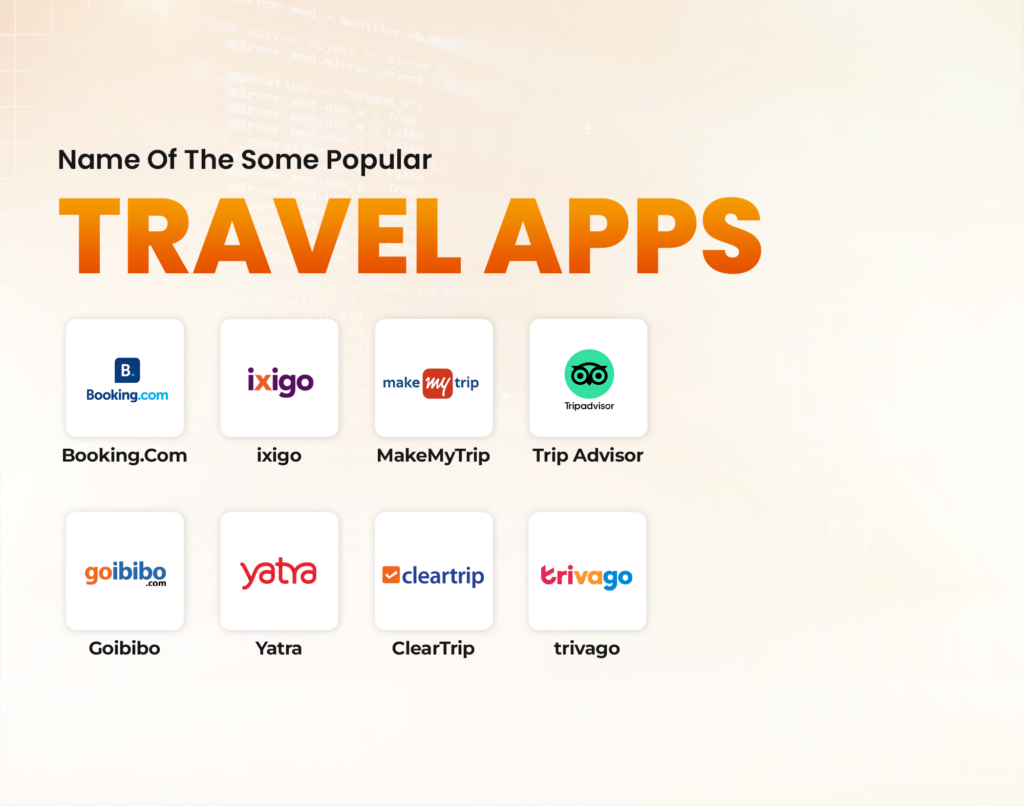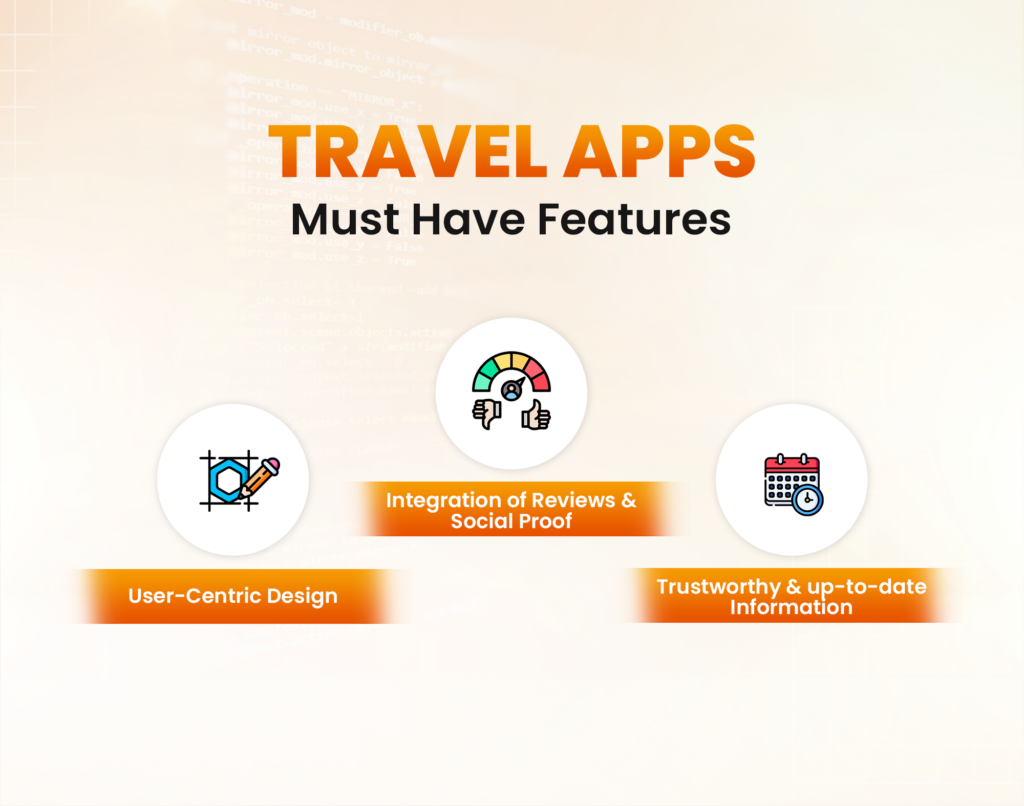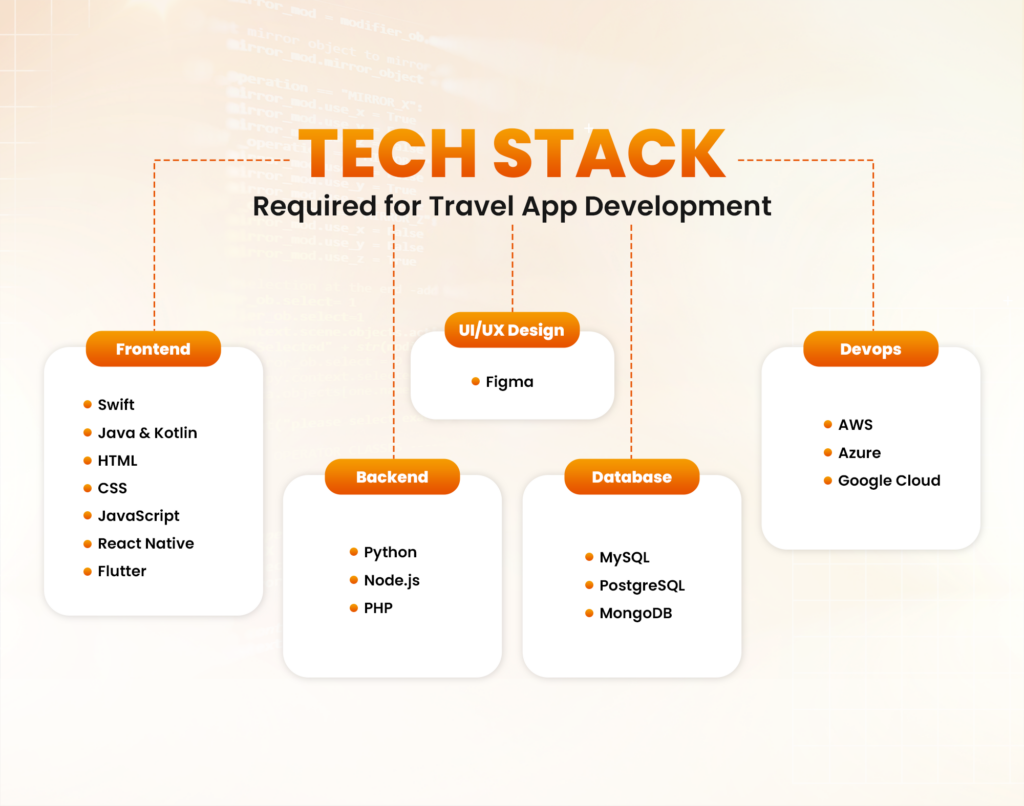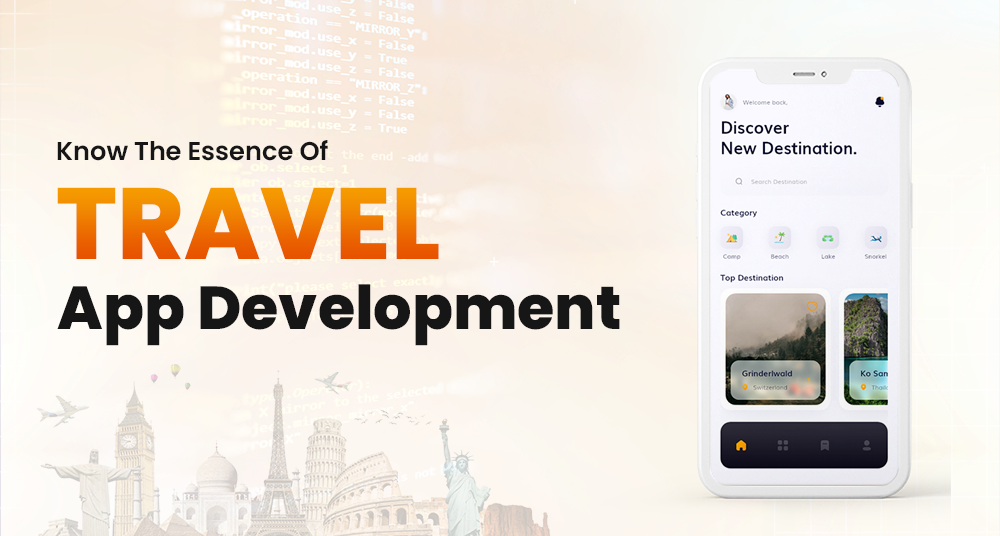Importance Of Travel App Development
In this digital age, travel apps are very helpful for regular visitors and guests who only visit occasionally. Their job is to help people with every part of their trip, from making plans and booking things to finding their way around new places. Smartphones have changed the travel business by making it easier to find information, make reservations, and connect with other people. People move in very different ways now that they care more than ever about ease of use, personalization, and real-time information.
People who want to open their businesses or make apps for this market should know how important these apps are to modern travel. This blog lets you learn everything you need to make a trip app. You will learn about market research, essential features, design principles, and travel planning app development strategies. This will give you the skills to make a travel app that stands out in a busy market and helps people worldwide travel better.
How the Market for Travel Apps Works
There are now many more travel apps on the market than ten years ago. They are now an essential part of the tourist and hotel businesses. As of 2025, this market has a lot of different apps that help with different parts of travel. These apps help with booking flights and hotels, making trip plans, and getting to know the area. Many people use mobile devices, and tourists are becoming increasingly interested in digital alternatives. Because of this, many people use travel apps to plan and enjoy their trips.
Two significant trends that are changing the market for travel apps are the need for more personalized experiences and information that is up to date in real time. People now expect travel apps to give them suggestions based on what they like and how they use the app. Suggestions driven by AI, virtual reality for exploring destinations, and real-time alerts for trip changes and local events are all becoming normal. As more apps combine travel, housing, and activities, it’s more important than ever that users have a smooth experience.
Additionally, the community runs more user-generated content and tools. People believe reviews and suggestions from other travelers give them more personal information and trustworthiness. People are more interested in community-based apps that let tourists share tips and stories.
Name Of The Some Popular Travel Apps

Common Features Every Travel App Should Have

User-Centric Design: Key points are intuitive tools and simple movement.
Offering many different services, from making reservations to giving you information about the area. Personalization means adjusting suggestions and material based on what each user likes.
Trustworthy and up-to-date Information: Making sure that info is correct and up to date.
Integration of Reviews and Social Proof: Adding social proof and reviews from other users.
These apps have set the bar for business by anticipating what users want and giving them a lot for their money. Entrepreneurs and developers need to know about these changes and what users expect to make a travel app that appeals to modern tourists.
Figuring out who the target audience is
When making a travel app, you must know who you’re making it for. A trip app will only be useful if it can give users what they want and need. There isn’t a single best way to do things in this market because it is so varied and constantly changing. It’s important to know who you’re trying to reach with your app because that affects how it looks, what features it has, and how you sell it.
It is possible for market research to help writers figure out who the target audience is by looking at things like age, gender, income level, and travel habits. You can learn a lot from polls, focus groups, and tracking trip trends. For instance, a travel app for cheap trips by yourself will be very different from one for expensive trips with your family.
People who use the app should be able to change it to fit their needs. People under 30 like low-cost choices and social sharing tools, while people over 60 like detailed plans and easy navigation. All the time, tests and comments from users are essential for making sure that the app changes to fit the needs of its users.
Before making the trip app, you should also know who it’s for and why they would want it. In this way, the app is helpful but also fun and valuable for those who will use it.
Essential Parts of a Travel App
There are many travel apps, and they need specific features to meet all tourists’ needs. These features improve the ease of use, dependability, and service.
Travel apps must help people find their way around places they’ve never been. It is vital to use thorough guidance and maps that are easy for people to use. This includes simple maps, GPS for real-time routes, exciting places to visit, and virtual reality to help people find their way around new places.
Booking Services
It should be easy to book rooms, planes, and other things with a travel app. This includes a lot of choices for flights, hotels, rental cars, and tours in the area. Make it easy for people to compare prices, see what’s available, and safely book. Filters for price range, area, and features make the experience better for users.
Reviews and Recommendations
Including user reviews and suggestions is conducive. Travelers decide what to do based on what other travelers have said and done. On the app, users should read and write reviews of places to stay, things to do, and activities. The app can be more valuable if it makes personalized suggestions based on how users behave and what they like.
Local Information (Weather, Currency, and Language Tips)
Giving people useful local information like forecasts for the weather, exchange rates for currencies, and simple language tips or explanations can improve their trip. Users don’t have to download multiple apps for different tasks because this feature meets all of their trip needs in one place.
User Profiles and Social Integration
Users can make things more personal by saving their likes, trips, and plans in their profiles. Adding social media features that let users share pictures, reviews, and events can make the app more community-focused and fun.
Access When You’re Not Online
It’s a big deal when you can use essential app features like maps, booking reports, and schedules when you’re not online. When traveling, people often go to places where they can’t connect to the internet, so storing important information offline is helpful and doesn’t get in the way.
Design and the experience of the user
A trip app’s style and user experience (UX) are critical to its performance. A simple design is not just a nice-to-have, it’s a must in a field where people want to save time and effort while planning and taking trips.
An excellent flight app has a design that is smooth and easy to use. If the app’s layout is clear and makes sense, it should be easy to use. To lower the brain load of users, features and materials must be easy to get to. With a good travel app, it would only take a few taps to book a hotel room. Making complicated steps easier to understand and making the app usable by people of all ages and tech levels is very important.
Essential Rules for UX Design
These are some of the most essential rules of UX design:
To keep things simple, the layout shouldn’t have much information or choices at once. It should be clean and simple.
Consistency
The app’s design features, like button styles, color schemes, and fonts, should all be the same so that the experience flows smoothly.
Accessibility
Accessibility means making sure that everyone can use the app by designing it for a wide range of users, including those with disabilities.
Feedback and Response Time
The app should give users instant feedback when they do something, like a proof message after booking. It should also be quick and sensitive and shouldn’t take long to start.
Addition of Visual Elements Related to Travel
Visual aspects are essential for setting the mood and making a travel app more appealing. This includes using high-quality pictures and movies of places to visit, which can motivate and interest people. Virtual walks and interactive maps can also make the experience better. The colors and fonts should fit with the trip theme; they should be warm, inviting, and lively to make people feel like they are on a journey.
At last, a trip app The UX design of travel should be as fun and easy as the trips it plans. The goal is to think ahead and go above and beyond what users need, making an attractive, useful, and fun experience that makes people want to use it again and spread the word.
Travel App Development Tech Stack

The right technology stack and development method are needed for a trip app to work well. These decisions affect how the app works, how the user feels, how it can grow, and how easy it is to manage.
The technology stack is made up of all the tools that are used to build and run an app. Databases, server systems, tools, and computer languages are some of these technologies. When picking a stack for a trip app, you should think about what the app needs, how it can grow, the experience of the developers, and your budget.
A typical stack might look like this:
Front-end development
Tools like React Native or Flutter are used to make mobile apps, and Angular or React are used to make web apps.
Backend Development
To build the back end, you need languages like Node.js, Ruby, or Python and systems like Express.js, Ruby on Rails, or Django.
Database
MySQL, PostgreSQL, or MongoDB are some options.
Server
You can store your site on AWS, Azure, or Google Cloud Platform.
Native Development vs. Cross-Platform Development
An extensive choice is whether to use native or cross-platform programming. The best speed and user experience come from apps made specifically for iOS or Android. To grow, they need more time and money. Cross-platform apps are more accessible and cost less because they only need one code set to run on all devices. However, speed and platform-specific features may not be able to be fully integrated.
Agile App Development
The agile method should be used to make travel apps. Iterative development divides the project into small pieces that can be looked at and changed more often. This method is helpful for several reasons:
- Flexibility: It’s easy to change based on user comments or changes in market trends.
- Efficiency: Quickly find and fix problems to cut down on development time.
- Togetherness in work: Encourages developers, artists, and stakeholders to work together, ensuring that the end product closely matches user wants and business goals.
To sum up, the technology tools and development methods used greatly affect how well a travel app works, how well it can grow, and how successful it is. If you choose the right tools and use a rapid development method, you can make an application that is strong, easy to use, and flexible.
Adding APIs and third-party services
You need third-party services and APIs to add booking systems, payment platforms, and the most up-to-date trip information to travel apps. APIs let apps connect to outside systems and service providers, which increases their functionality without requiring a lot of development work to be done in-house. You can make the app more useful by adding the Google Maps API for travel, the Skyscanner API for flight searches, and Stripe or PayPal for safe payments. A full trip app needs APIs for weather information, currency exchange rates, and language translation.
Testing and Making Sure of Quality
Testing is a vital part of app development that ensures the app is reliable, easy to use, and safe. Some types of tests are:
- Testing the app’s usability to make sure it is intuitive to use.
- Performance testing checks how fast and well the app works.
- Security testing is the process of keeping user data and activities safe from attacks.
- Continuous testing while the product is being built helps find and fix problems, ensuring a good result.
Plans for marketing and launching
Getting people excited about an app before it comes out is crucial for success. This can be done with the help of social media marketing, working with celebrities, and showing off sneak peeks of cool app features. To keep the app helpful and improve user happiness after it’s released, it’s essential to get user feedback and keep it up-to-date. Some other effective marketing strategies are App Store Optimization (ASO), focused ads, and making interesting content that highlights the app’s benefits.
Conclusion
The process of travel app development includes researching the market, figuring out who the app is for, adding the most essential features, and picking the best technology stack. Thorough testing and the inclusion of third-party services guarantee a dependable and simple-to-use app. Long-term success depends on good marketing and changes after the start. If you go this way, you will have a lot of chances to be creative and make unique trips. You could also make a lot of money in the growing travel business.






What do you think?
It is nice to know your opinion. Leave a comment.